Cameras Abandoned 85 Years Ago by Photography Pioneer Found On Glacier
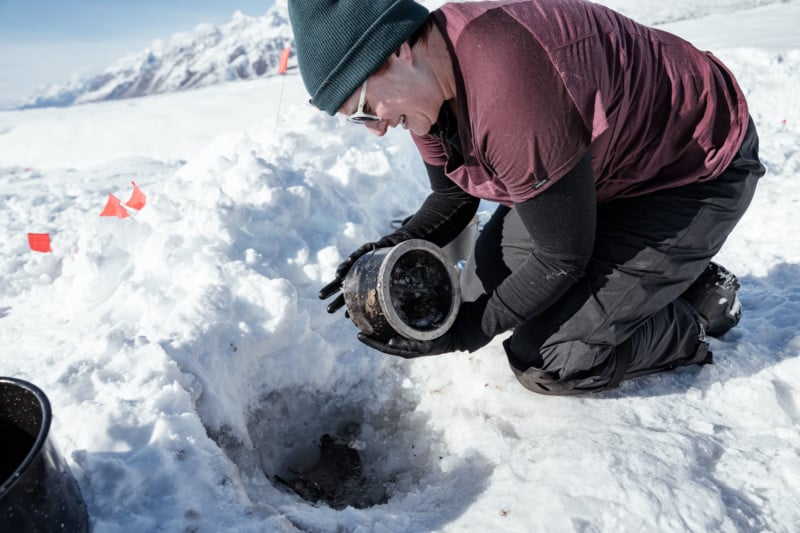
A historic cache of camera equipment abandoned by two notable mountaineers in 1937 has been found on a glacier in Canada’s Yukon territory.
Photographer Bradford Washburn and his mountaineering partner Robert Bates were forced to abandon the photo gear so they could escape with their lives.
Successfully extracted from the ice was a significant portion of Washburn’s Fairchild F-8 aerial camera. Washburn would go on to pioneer the use of aerial photography to analyze mountains. While his photos had a practical use, the striking black-and-white photos are also considered to be art.
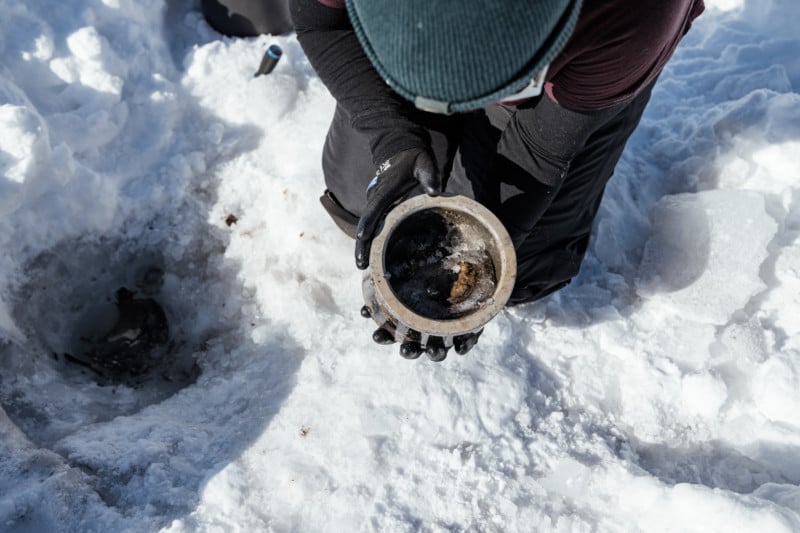
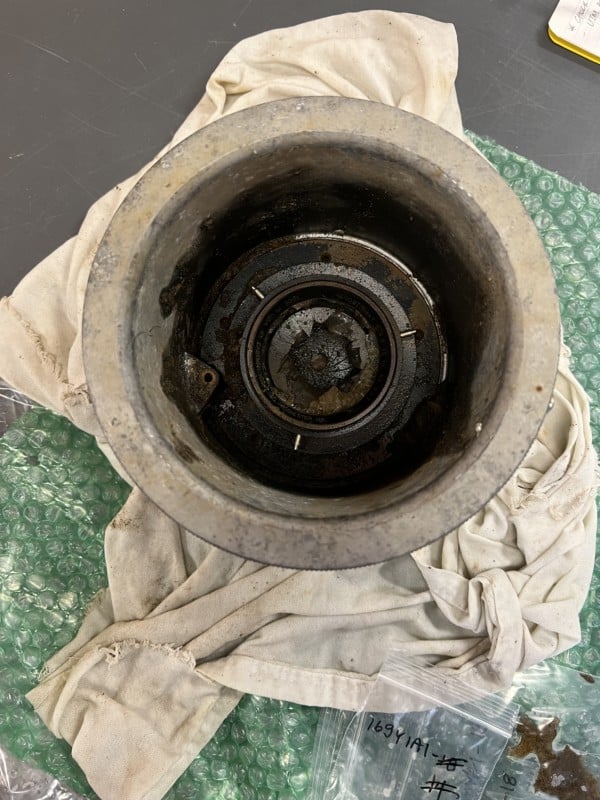
The focal plane shutter Fairchild F-8 was fitted with a Schneider Xenar 240mm f/8 lens. It was used during the Second World War when it was fitted with a Wollensak 375mm f/5.6 lens.
Washburn is best known for capturing American peaks and he would often remove an airplane door to secure his camera and himself to the plane. This required exceptionally warm clothing in wintry conditions.
Glacier Find
In addition to the Fairchild F-8, the team retrieved two motion picture cameras. A DeVry “Lunchbox” model and a Bell & Howell Eyemo 71A. Furthermore, the film was still loaded in both motion cameras.
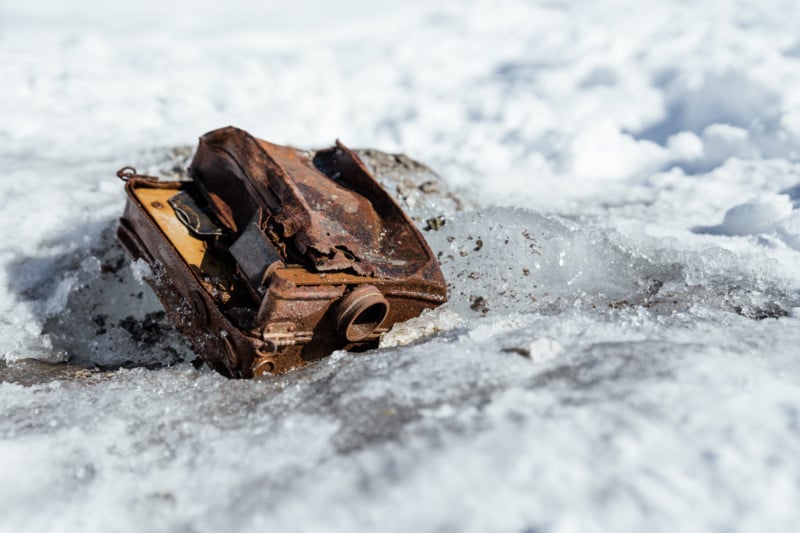
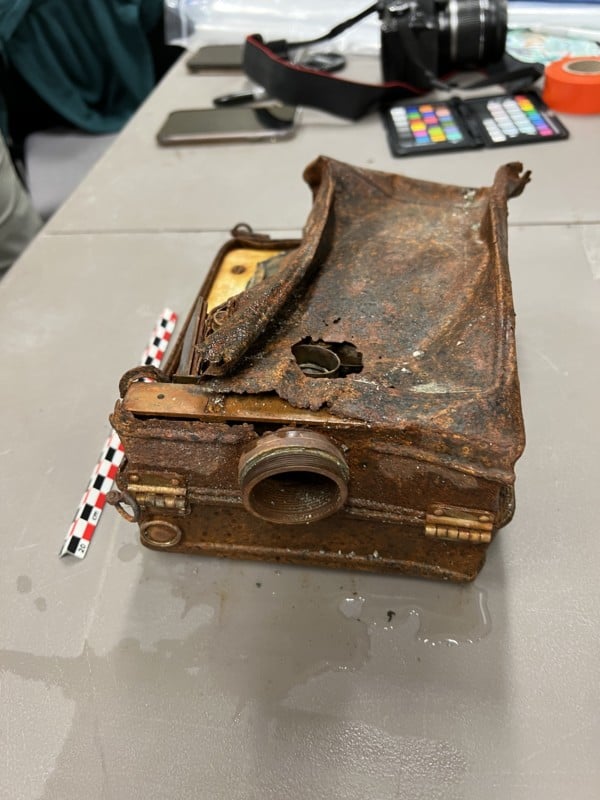
Outdoor exploration media company Teton Gravity Research leveraged innovating glacial mapping processes to determine where the cache may have moved over decades on the glacier. Led by professional mountain explorer, Griffin Post, the team notified Park Canada of the find.
“While there’s the obvious historical value in retrieving these artifacts, particularly the camera and film from one of the most legendary aerial photographers in history,” says Post.
“The scientific value of the find is equally important, providing researchers with a data point to calculate glacier movements in the area that predates any other data point by decades.”
Sharon Thomson, an archaeologist for Parks Canada, adds: “The rediscovery of the Washburn-Bates cache after 85 years locked in the ice adds a tangible dimension to an exciting story of exploration and survival at almost unbelievable odds.”
“From a cultural resource management perspective, it presents a rare and valuable opportunity to study change over time on an archaeological site in a dynamic glacial environment.”
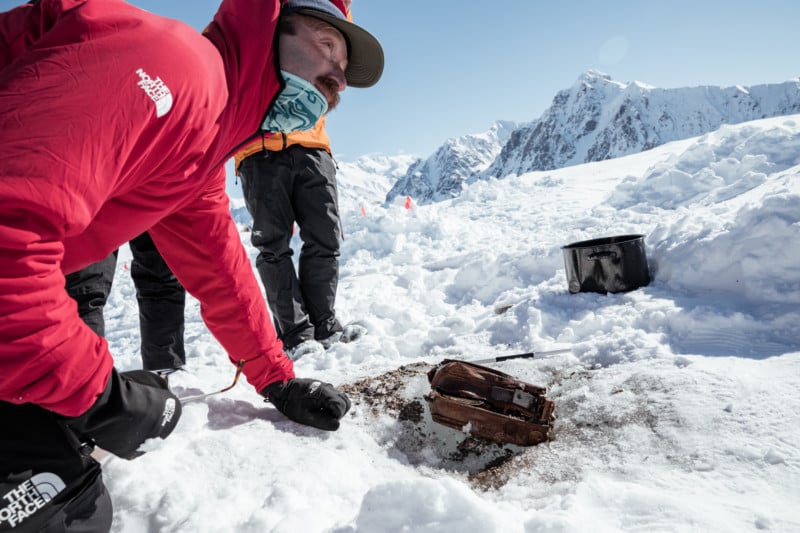
Teton Gravity Research brought a film crew with them who documented the discovery and recovery of the artifacts and the company plans to release the film project in the near future.
A team of conservators working for will preserve the artifacts and are working to share the objects and their associated stories of them with the public.
Image credits: Photographs courtesy Teton Gravity Research.